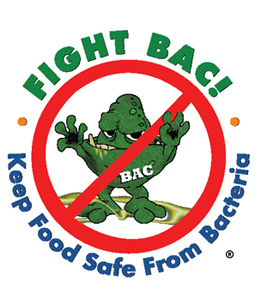March 8, 2010
Shining A Light On Food-Borne Illnesses

By Michael D. Shaw
How significant are food-borne illnesses? A report, released just a few days ago, estimates that these illnesses cost the United States $152 billion in health-related expenses each year.
Sandra Eskin—a spokeswoman with Make Our Food Safe Coalition— tells us that “This is significantly more than previous official estimates, and it demonstrates the serious burden that food-borne illness places on society.”
So much for the dollars. What about the human costs? Interestingly, the most widely cited source for these statistics comes from a paper published back in September of 1999, entitled “Food-Related Illness and Death in the United States.” The authors were all from the CDC in Atlanta, and in this groundbreaking work, they used data from a large number of surveillance organizations.
Their findings were sobering, to say the least. Here are but a few:
- Food-borne diseases cause approximately 76 million illnesses, 325,000 hospitalizations, and 5000 deaths in the United States each year.
- A certain amount of this illness is caused by agents that have not yet been identified, and thus cannot be diagnosed.
As to the unknown agents, the authors remind us that some of the top baddies identified at the time of their report (Campylobacter jejuni, Escherichia coli O157:H7, Listeria monocytogenes, and Cyclospora cayetanensis) were not recognized as causes of food-borne illness a mere twenty years earlier.
Most authorities believe that there is significant under-reporting, and also contend that the numbers have gotten worse in the years since the 1999 paper. Few would argue against this, especially since the globalization of food sources has increased dramatically, and vigilance in many countries can be lacking.
You might ask how food safety testing in currently performed. The surprising answer is that the methods have changed little in the past 100 years. A sample of the foodstuff is taken two or three times per shift, and these are sent to a contract laboratory. At the lab, a scraping is placed on a Petri dish, and is cultured in accordance with the appropriate established test method.
After a suitable time period, the culture is examined under a microscope by a trained microbiologist, where bacterial identification and counts are performed. Depending on the food item, it might take from two days to a full week for results to be reported.
In general, inventory is not held pending the results. That is why you hear about recalls, since any remediation efforts are usually after the fact. While outbreaks are rare, tell that to the survivors of the 5,000 decedents.
Over the past twenty years or so, various methods for so-called rapid microbial detection have been introduced, including molecular whole-cell and surface recognition, enzyme/substrate approaches, and nucleic acid-related techniques.
One promising scheme has been introduced by San Clemente, CA based Micro Identification Technologies Inc., utilizing the well-established principle of light scattering.
In operation, the cultured sample is put into a vial containing filtered water, and then placed into the system. At this point, a laser beam shines on the vial, generating a multi-angle light scattering pattern. 35 detectors spread over five arcs gather scattering pattern intensity data. Notably, scattering patterns are unique for each type of microorganism. A definitive identification is effected by comparing the pattern with the system’s database.
Two distinct advantages of this method are the very quick identification time (less than 10 minutes), and the low cost ($0.10 per test). 23 species can now be identified with this technique. An upcoming improvement in the system, according to John Ricardi—the company’s executive vice president and chief operating officer—is a single-click facility for immediately identifying Listeria, Salmonella, and E. coli.
Micro Identification Technologies received an important validation on its system from the AOAC International Research Institute, and is now actively approaching the food safety application. Future market areas would include drinking water, clinical diagnostics, and pharmaceuticals.
Of course, all the food testing in the world won’t overcome poor practices in food preparation. The CDC offers an excellent monograph on the subject of food-borne illness that should be required reading for anyone who cooks—or eats, for that matter.

